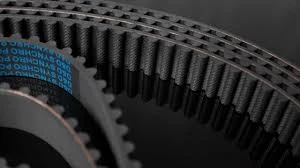- Arabic
- French
- Russian
- Spanish
- Portuguese
- Turkish
- Armenian
- English
- Albanian
- Amharic
- Azerbaijani
- Basque
- Belarusian
- Bengali
- Bosnian
- Bulgarian
- Catalan
- Cebuano
- Corsican
- Croatian
- Czech
- Danish
- Dutch
- Afrikaans
- Esperanto
- Estonian
- Finnish
- Frisian
- Galician
- Georgian
- German
- Greek
- Gujarati
- Haitian Creole
- hausa
- hawaiian
- Hebrew
- Hindi
- Miao
- Hungarian
- Icelandic
- igbo
- Indonesian
- irish
- Italian
- Japanese
- Javanese
- Kannada
- kazakh
- Khmer
- Rwandese
- Korean
- Kurdish
- Kyrgyz
- Lao
- Latin
- Latvian
- Lithuanian
- Luxembourgish
- Macedonian
- Malgashi
- Malay
- Malayalam
- Maltese
- Maori
- Marathi
- Mongolian
- Myanmar
- Nepali
- Norwegian
- Norwegian
- Occitan
- Pashto
- Persian
- Polish
- Punjabi
- Romanian
- Samoan
- Scottish Gaelic
- Serbian
- Sesotho
- Shona
- Sindhi
- Sinhala
- Slovak
- Slovenian
- Somali
- Sundanese
- Swahili
- Swedish
- Tagalog
- Tajik
- Tamil
- Tatar
- Telugu
- Thai
- Turkmen
- Ukrainian
- Urdu
- Uighur
- Uzbek
- Vietnamese
- Welsh
- Bantu
- Yiddish
- Yoruba
- Zulu
Jul . 30, 2024 16:01 Back to list
Optimal Performance and Durability of Steel Timing Belts for Enhanced Engine Efficiency and Reliability
Understanding Steel Timing Belts An Essential Component in Mechanical Engineering
In the realm of mechanical engineering, precision and reliability are paramount, especially when it comes to power transmission systems. One of the key components that ensure this reliability is the timing belt. Specifically, steel timing belts have gained significant attention due to their durability, strength, and performance characteristics. In this article, we will explore what steel timing belts are, their construction, advantages, and applications.
What is a Timing Belt?
A timing belt is a type of belt that synchronizes the rotation of the crankshaft and the camshaft in an engine, ensuring that the engine's valves open and close at the correct times during each cylinder's intake and exhaust strokes. This synchronization is vital for the engine's operation and overall efficiency. While traditional timing belts are made from rubber or polyurethane materials, steel timing belts incorporate steel reinforcement, resulting in superior performance.
Construction of Steel Timing Belts
Steel timing belts are constructed using a core material, typically a composite of rubber and special polymers, which is then reinforced with high-strength steel cords. This combination provides excellent tensile strength and minimizes elongation under load. The teeth of the timing belt help in gripping the pulleys, ensuring precise timing and preventing slippage. The steel reinforcement also contributes to enhanced durability, allowing these belts to withstand harsh operating conditions and high levels of stress.
Advantages of Steel Timing Belts
1. High Strength and Durability One of the most significant advantages of steel timing belts is their strength. The steel cords provide resistance against stretching, which is essential for maintaining the precise timing required in mechanical systems.
steel timing belt

2. Temperature Resistance Steel timing belts can operate effectively in a wide range of temperatures, making them suitable for applications in extreme conditions. This characteristic is particularly beneficial in automotive and industrial machinery.
3. Low Maintenance Unlike chain systems, which require regular lubrication and maintenance, steel timing belts are generally low-maintenance. This reduces overall operational costs and downtime for machinery.
4. Reduced Noise Levels Steel timing belts tend to operate more quietly than other types of timing mechanisms, providing a more pleasant working environment in industrial settings.
5. Versatile Applications Steel timing belts can be utilized in various applications, from automotive engines to conveyor systems and robotics. Their adaptability makes them a popular choice in diverse industries, including automotive, aerospace, and manufacturing.
Applications of Steel Timing Belts
The versatility of steel timing belts allows them to be employed in multiple fields. In the automotive sector, they are commonly used in engine timing systems, ensuring that the engine runs smoothly and efficiently. In industrial machinery, steel timing belts are often found in conveyor systems, where they facilitate the transport of materials with precision. Moreover, in robotics, these belts enable accurate movements, ensuring that robotic arms and mechanisms operate flawlessly.
Conclusion
In conclusion, steel timing belts represent a crucial advancement in mechanical power transmission technology. Their unique combination of strength, durability, low maintenance, and versatility makes them an excellent choice for a variety of applications. As industries continue to demand higher performance and reliability from their mechanical systems, steel timing belts will undoubtedly play an essential role in the future of engineering. Understanding and leveraging the benefits of these components can lead to improved efficiency, reduced downtime, and ultimately, greater success in various engineering ventures.
-
Upgrade Power Steering Pump Belt for Smooth, Quiet Operation
NewsAug.27,2025
-
Precision Timing Belt & Chain: Engine Performance & Durability
NewsAug.26,2025
-
Precision Lathe Drive Belts: Durable & Reliable Performance
NewsAug.25,2025
-
84.5 Serpentine Belt: Durable & Precision Fit for Your Engine
NewsAug.24,2025
-
Premium Ribbed Drive Belts for Quiet Power Transmission
NewsAug.23,2025
-
High-Performance Vehicle Timing Belt for Engine Precision
NewsAug.22,2025

